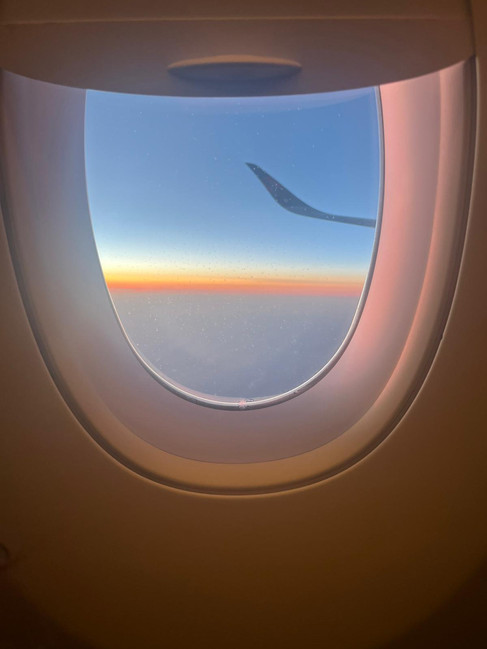Airports & Airplanes as a “Third Place”
- mtbersagelbraley
- May 15, 2025
- 2 min read
Updated: May 16, 2025
By Kaitlyn (Nursing, ’26)
Individuals sprinting to catch a flight, long wait times, TSA lines, security checks, and physical exhaustion are all terms that come to mind when discussing airport travel (especially domestically). However, in just the first day on our long journey to South Africa, we have had the opportunity to make short term connections with other travelers. Long lines, plane seating, and gate waiting areas all facilitated communication that would not have occurred outside of the travel setting.
The abnormal occurrence of these conversations can be attributed to airports and airplanes being used as a “third place”. “Third places” are locations that prompt conversation and interaction. For example, coffee shops have lines to order, pickup lines, and on-site seating, all of which encourage interaction between customers. In the case of our study abroad trip, these conversations, although brief in nature, have resulted in impactful memories and exposure to cultures outside of our own.
One woman in the gate waiting area in Amsterdam before the flight to Cape Town provided students with a particularly unique world traveling perspective. The woman illustrated her passion for travel, as she described her trips visiting 6 of the 7 world wonders (she has not visited the Great Wall of China). Her desire to learn about the unique differences between all of the cultures that she interacts with throughout her travels is inspiring. This woman is a true demonstration of a traveler entering a culture without the intention of letting her own cultural influences alter her experience.
As student travelers, we are aiming to enter South African culture with respect and sincere appreciation for the differences between South African and American culture.
Professor's Note: The concept of "third places" has been a theme on Viterbo's campus this year with the publication of our own Dr. Rick Kyte's book: Finding Your Third Place: Building Communities (and Making Great Friends along the Way).







Comments